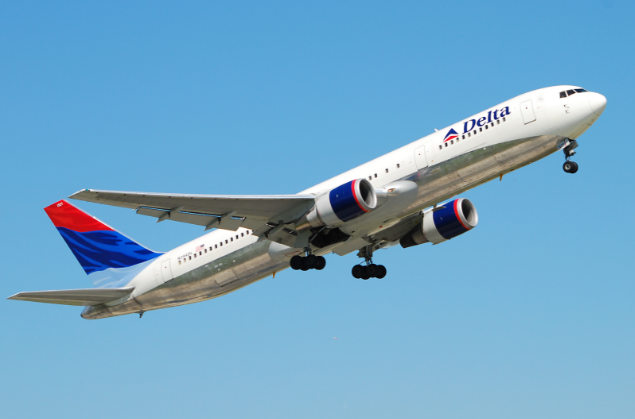FAKED: Thousands of jet engine parts with falsified safety certificates installed in commercial aircraft
By bellecarter // 2023-10-09
Tweet
Share
Copy

Top airlines in the United States are reportedly searching for thousands more engine parts that were backed by falsified safety certificates. These parts have already been installed in their aircraft.
The spare parts, from simple nuts and bolts to more critical turbine blades, went into dozens of jet engines made by a General Electric (GE) joint venture during maintenance works. The engines were then installed back onto the popular Boeing and Airbus airplanes, according to GE and safety officials. They have already been able to retrieve questionable parts from 126 engines so far at a growing number of airlines.
A United spokesman said it had discovered parts in engines on two aircraft, replaced the engines and returned the planes to service. He also said the company continues to investigate and expects no effect on customers. Meanwhile, Delta said affected engines involved less than one percent of its total. On the other hand, Southwest said it had one engine containing two low-pressure turbine blades and replaced those blades. American also stated it identified uncertified components on a small number of aircraft and took them out of service for replacement.
The culprit is said to be AOG Technics, a little-known broker of airplane parts, which served as a component middleman, acquiring basic parts and selling them to maintenance and repair organizations. The U.K.-based firm was established in 2015 and currently lists an address that is a co-working space near Buckingham Palace.
GE already filed a lawsuit and its engine partner Safran claimed that the small company used large-scale faking of documentation to sell engine parts to airlines. AOG Atty. Alexander Weinberg did not comment on the said legal matter. However, it was found that the firm had already submitted documents on Wednesday, Oct. 4, after a London judge ordered it to detail its parts sales. Both GE and Safran are said to be looking into the records to determine the full extent of the company's activities. Before that review, the companies said they had found 16 engines in their shops and 110 in other facilities that include parts sourced from AOG Technics.
Meanwhile, the Federal Aviation Administration (FAA) and its European counterpart have accused AOG of using forged documents. Airline parts come with certificates that are used to track each part's safety record, origin, and airworthiness.
The most affected engine model was the CFM56, which holds the record for most aircraft engines ever sold. According to the engine makers, the sales include over 33,900 of the turbines delivered to customers since its entry into service in 1982. It also currently powers Boeing's predecessors -- the 737 MAX and the original Airbus A320, both used as workhorses for the aviation industry. The dubious documentation "puts aircraft safety in jeopardy and renders it impossible for operators who have purchased these parts to verify the airworthiness of their engines," according to the lawsuit filed by GE, Safran, and their joint venture, CFM International. "All falsified parts need urgently to be identified and the relevant operators notified."
As per a U.S. database of approvals for parts such as those sold by AOG, there are no records of the company having received approvals. "It's a bit strange that a phantom company can be allowed to supply spare parts with false certification documents," Safran Chief Executive Olivier Andries told reporters last month. (Related: America is witnessing DELIBERATE DESTRUCTION of its aviation industry.)
Questions of AOG's legitimacy and existence raised
It is not just the safety documents that should be looked at as Bloomberg News reported earlier on the problems with AOG Technics' safety documents and with the LinkedIn profiles of apparent AOG Technics employees. According to court documents, AOG Founder Jose Zamora Yrala is its lone director and shareholder. The lawsuit also alleged that LinkedIn profiles purporting to be AOG staff featured stock photographs. "There are, therefore, legitimate questions as to whether the profiles have been manufactured and whether the profiled employees actually exist," according to the suit. As per the news outlet, the reception and security staff denied that they were familiar with the company at its listed headquarters at the new office block in central London. Worse, a representative for co-working specialist Argyll, which leases space in the building, confirmed that AOG Technics was a virtual client that does not hold a permanent presence at the publicly listed location. The recent controversy has raised questions about the efficacy of the predominantly paper-based system that is used to track parts and the ease of fabrication. "If you put a part in an airplane engine, you should feel confident that it is legitimate," said Ron Epstein, an aerospace analyst at Bank of America. "Somebody found a loophole. The system is supposed to guard against that." The scandal also added pressure to an already stretched maintenance and repair supply chain in the American airline industry. Overhaul firms, battling with staffing and spare-part shortages, are struggling to supply sufficient capacity to keep pace with the recovery in air travel as an aftermath of the Wuhan coronavirus (COVID-19) pandemic. Follow SupplyChainWarning.com for more stories related to the shortage of transportation parts, including aircraft products.Sources for this article include:
WSJ.com BNNBloomberg.caTweet
Share
Copy
Tagged Under:
national security FAA corruption transportation conspiracy big government bogus deception aircraft southwest dangerous american airlines discoveries United Airlines airlines supply chain delta 737 Max spare parts jet engine parts fake certificates AOG Technics CFM56 Airbus A320 aircraft safety
You Might Also Like
Breitbart’s Alex Marlow: Biden favoring OPEN BORDERS to keep wages down and Democrats in power
By Ramon Tomey // Share
By Arsenio Toledo // Share
Recent News
Archaeologists uncover vast prehistoric pit circle from the Neolithic era near Stonehenge
By kevinhughes // Share











